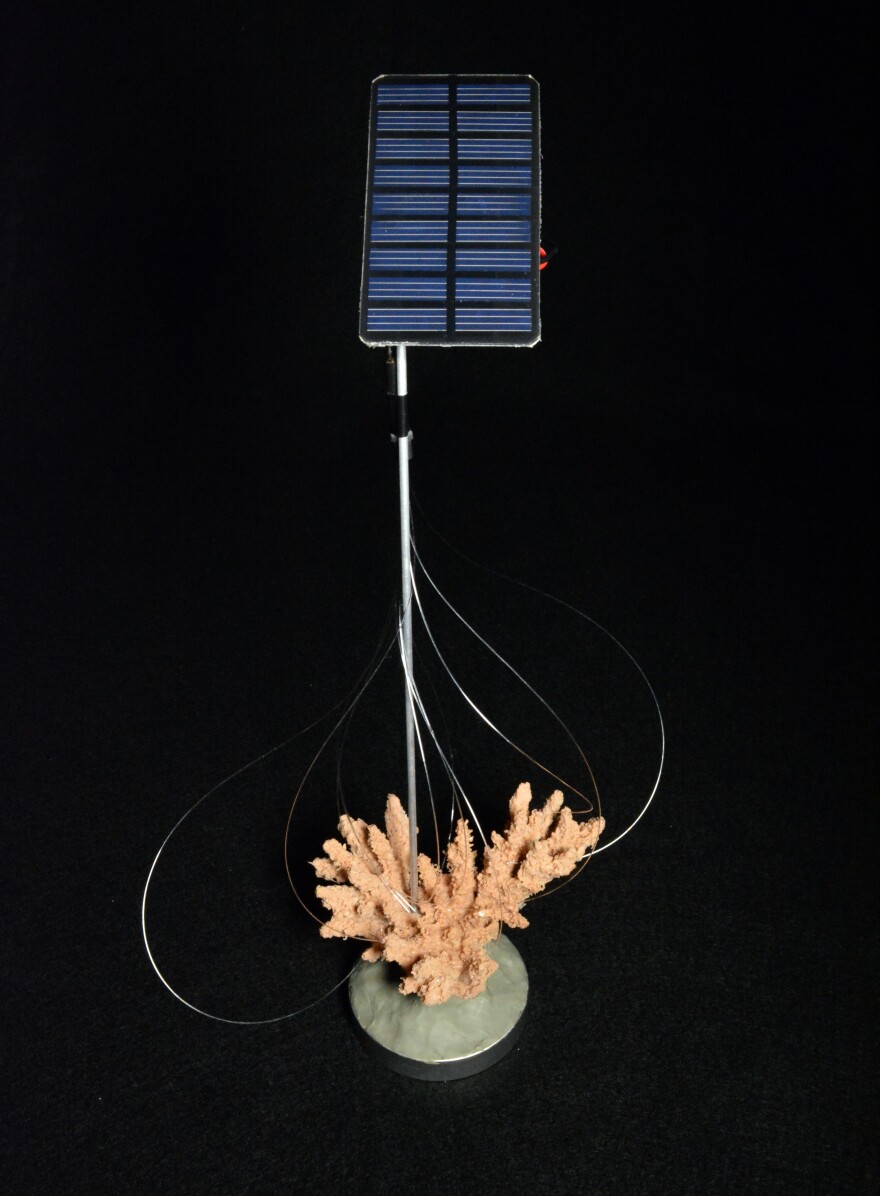Humans have long looked to animals for design inspiration. From basic camouflage to a quiet bullet train in Japan to the Wright brothers' wings, the process called biomimicry is a basic tenet of human engineering.
Jonathon Keats has turned it on its head.
The artist and philosopher's latest exhibit, at the Samek Art Museum at Bucknell University in Pennsylvania, is a thought experiment on the selfish ways we humans innovate.
The central question of the works: We steal the animal kingdom's evolutionary inventions, so why shouldn't the animal kingdom steal ours?
"What I've observed as I've researched these inventions is that they're really great for us, but not necessarily so good for the species that came up with them in the first place," Keats told NPR Here & Now host Robin Young. "Or more broadly, that our technologies have made the world much more difficult for life on the planet aside from us."
He didn't need to create anything new to show the absurdity of human problem-solving — all he had to do was give our technology to animals. The pieces in his exhibit are based on actual problems, and demonstrate solutions that are technically within the realm of possibility.
Take for instance, his "GPS For Birds" model:
The problem is well-documented: Climate change is threatening bird populations because their normal migration patterns now lead them to spots where they no longer can nest safely. Keats' proposed solution is a sort of drone magnet, which would neutralize a bird's natural compass and create a new migration pattern that would lead them to a safer place to nest.


Like a vicious innovation circle, Keats says humans create technology to fix problems caused by the technology they already have. His exhibit pushes that concept into the absurd.
"Where it gets more interesting for me is where all of this starts to fall apart," Keats says. "Does it really make much sense for us to have all of these flocks of drones as ways of getting birds around? Do we really want to bring other organisms into this kind of pileup of technology on top of technology that is very much the human way?"
In other words, even if it's possible, why create thousands or tens of thousands of drone GPS magnet planes, when we could just work to combat the damage to the planet that's hurting the birds in the first place?
"This way to me seems, potentially, to be unsustainable — and certainly to be questionable in terms of the logic," Keats says.
His exhibit, which explores a number of other philosophical questions as well, is on display at the Samek Museum in Lewisburg, Pa., until June.
You can see some of his other designs below:
Copyright 2021 NPR. To see more, visit https://www.npr.org.




